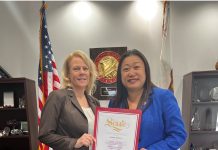The majority of sewage back ups into private homes from the city’s mainline sewer occur when plumbers unstop root blockages in private pipes at their juncture to the city main. Poor seals where water leaks draw roots. Plumbers sever the roots from the private pipe, freeing the hairball-like mass of roots, which enter the city’s pipeline and block the collection system, David Shissler, the city’s director of water quality, told the City Council last week.
Such leaks could be averted if property owners not only took care of problematic roots, but also notified the city when they cut them loose, so the city could then take steps to intercept the freed root masses before they cause a major blockage, said Shissler.
So far, the city’s current policy of sending notices to residents to alert them and ask them to address the invasive roots and clean their pipes results in about a 12 percent response rate, according to the staff report.
So last week the City Council authorized staff to formulate a program aimed at reducing the incidence of these spills with measures ranging from a stricter ordinance with inspection requirements to property owner incentives and increasing awareness. Staff will present a plan to the Council next March after conducting research and seeking public input.
City sewage spills have decreased to an average of six spills a year for the past five years, compared to 27 spills recorded in 2002. That figure prompted the city to spend over $30 million in sewer improvements, yielding “dramatic progress” over the past 10.5 years with more frequent pipe cleanings and better equipment, Shissler reported.
Leaks on private properties have decreased only slightly, however, with numerous incidents recorded in the past year due to roots from private pipes blocking the main line.
Since awareness campaigns have proven ineffective, Shissler said city staff needs to find ways to obtain compliance, such as requiring property owners to notify staff when plumbers clean private lateral pipes. Other proposed measures include appropriating $60,000 to perform sample video inspections to monitor cleaning operations and areas suspected of high root growth; revising the city ordinance on private sewer pipes to require inspections at point-of-sale, during major remodels and after sewage spills; launching a campaign to encourage residents to install backflow devices, which keep waste from backing up into private homes; and offering property owners financial incentives to address root intrusion problems in their pipes.




